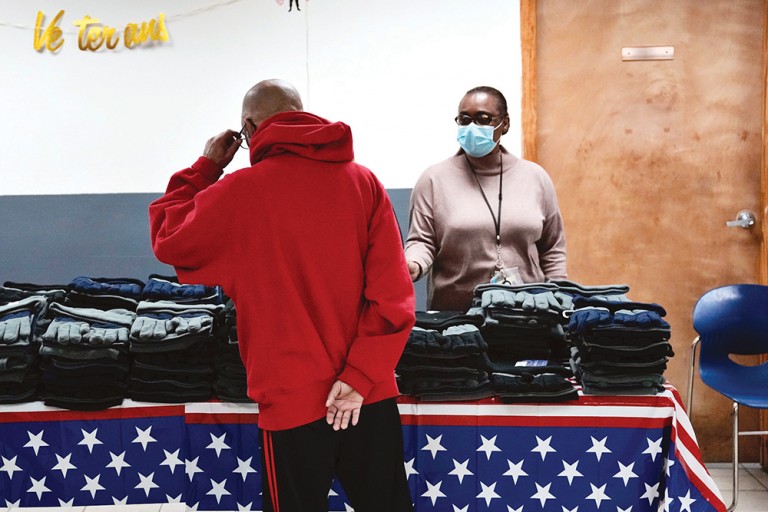By Forum Staff
The U.S. Department of Housing and Urban Development on Friday released its 2024 Annual Homelessness Assessment Report: Part 1: Point-in-Time Estimates, an annual snapshot of the number of individuals in shelters, temporary housing, and unsheltered settings.
The report found more than 770,000 people were experiencing homelessness on a single night in January 2024, an 18-percent increase from 2023. This report reflects data collected a year ago and likely does not represent current circumstances, given changed policies and conditions.
Through targeted funding and interventions that utilize evidence-based practices, homelessness among veterans dropped to the lowest number on record. There was a nearly 8% decrease – from 35,574 in 2023 to 32,882 in 2024 – in the number of veterans experiencing homelessness. Among unsheltered veterans, the number dropped nearly 11 percent – from 15,507 in 2023 to 13,851 in 2024. This year, HUD has helped connect nearly 90,000 veteran households to stable, rental homes through the HUD-Veterans Affairs Supportive Housing (HUD-VASH) Program. The Department of Veterans Affairs announced that it has permanently housed 47,925 Veterans experiencing homelessness in FY2024 — marking the largest number of veterans housed in a single year since FY 2019. Since day one, the Biden-Harris administration has been tackling the nation’s homelessness crisis with the urgency it requires, prioritizing new resources and programs to help communities quickly reconnect people experiencing homelessness to housing, while continuing to focus on the long-term strategy of developing more affordable housing.
Some communities reported data to HUD that indicated that the rise in overall homelessness was a result of their work to shelter a rising number of asylum seekers coming into their communities. Importantly, this reporting was collected prior to the Biden-Harris Administration taking executive action to secure our border, after Congressional Republicans blocked a bipartisan Senate bill that would have provided needed resources and authorities to help reduce irregular migration. Since then, unlawful crossings at the border have dropped by more than 60 percent. Encounters are at their lowest since July 2020. As a result, migrant arrivals to communities across the country have dropped significantly. In Chicago, for example, the migrant shelter census is down more than 60 percent and in Denver, the shelter census is down nearly 100 percent. This fall, both cities announced an end to their migrant shelter systems.
Migration had a particularly notable impact on family homelessness, which rose 39 percent from 2023-2024. In the 13 communities that reported being affected by migration, family homelessness more than doubled; whereas in the remaining 373 communities, the rise in families experiencing homelessness was less than 8 percent. Rents have also stabilized significantly since January 2024. Since then, HUD has added 435,000 new rental units in the first three quarters of 2024; that’s more than 120,000 new units each quarter. The PIT Count was conducted at the tail of significant increases in rental costs, as a result of the pandemic and nearly decades of under-building of housing. Rents are flat or even down in many cities since January.
HUD Agency Head Hon. Adrianne Todman said, “While this data is nearly a year old, and no longer reflects the situation we are seeing, it is critical that we focus on evidence-based efforts to prevent and end homelessness.”

